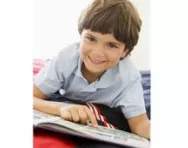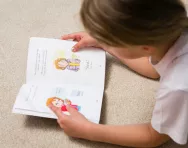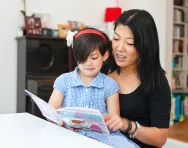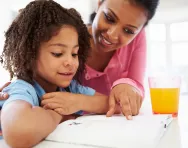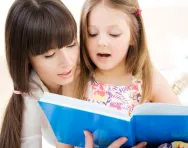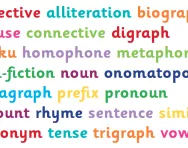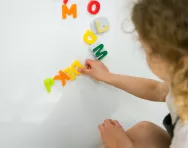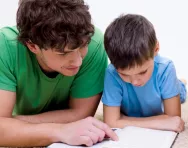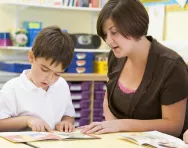School reading schemes explained
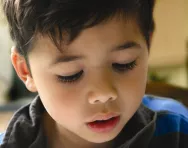
Contents:
Which reading schemes are commonly used in schools?
How are the schemes devised?
How many books do children read at each stage?
What do the different levels mean?
What other resources are available?
Do all schools use reading schemes?
How can you help if your child is behind?
How will your child make the transition to normal books?
Which reading schemes are commonly used in schools?
Primary schools have a range of reading schemes to choose from. The most popular include Oxford Reading Tree (ORT), Collins Big Cat and Rigby Star, but other schemes are also used, including Lighthouse, Storyworlds and New Reading 360. Some schools continue to use older series, such as Ginn and New Way.


Download a FREE phonics pack
- Phonics phases sound mats
- 5 phonics games
- Plus access hundreds more phonics worksheets when you register for FREE
At Rickleton Primary School in Sunderland, children follow the ORT programme. “The books are new, bright and fresh, and the stories are about events that children can relate to,” explains literacy coordinator Nicola Simpson. Meanwhile, at Headley Park Primary School, Bristol, teachers use the Success For All scheme in class – a programme based around proper children’s books – and Collins Big Cat as take-home books. “Success For All gives a good foundation in phonics, while the Big Cat books are a lot more inspiring than the old, tatty home readers that they were chosen to replace,” says deputy head Tim Browse.
“It’s common for schools to use a combination of reading schemes,” says Sophie Quarterman, ORT’s marketing manager. “Some follow the system rigidly, but others mix and match, using one or more schemes.”
How are the reading schemes devised?
Reading schemes are developed in conjunction with literacy experts. ORT, for example, is supported by Debbie Hepplewhite, creator of the synthetic phonics programme used in schools. Many reading schemes include non fiction texts to help children develop a broader range of reading skills. Most schemes begin in the Foundation Stage and progressively become more difficult. ‘For example, Key Stage 1 books are written with a mix of high-frequency and decodable words to develop a range of reading strategies, while Key Stage 2 books cover a wide range of genres and subjects, linking to the curriculum,’ explains Louisa Combs, marketing executive for Collins Big Cat.
How many books do children read at each stage of the reading scheme?
The number of books at each level depends on how much practice children need at that stage of the reading scheme. Book band colours are used to categorise books at each stage, helping educators and parents track reading progress.
Many schemes also have offshoots alongside the core texts. “In addition to the classic Biff, Chip and Kipper texts, ORT offers other strands, such as Songbirds Phonics, Snapdragon variety fiction, and Fireflies non-fiction, to develop children’s reading range,” says Sophie Quarterman.
What do the different levels mean in a reading scheme?
Children learn to read at their own pace, but as a guide, the most popular reading schemes are broken down as follows:
Oxford Reading Tree
| Stage 1 | 3.5 to 4.5 years |
| Stage 1+ | 4.5 to 5 years |
| Stage 2 | 4.5 to 5 years |
| Stage 3 | 5 to 5.5 years |
| Stage 4 | 5 to 5.5 years |
| Stage 5 | 5.5 to 6 years |
| Stage 6 | 6 to 6.5 years |
| Stage 7 | 6.5 to 7 years |
| Stage 8 | 7 to 7.5 years |
| Stage 9 | 7.5 to 8 years |
Collins Big Cat, Rigby Star and Lighthouse
Reception: lilac, pink A/B, red A/B
Year 1: yellow, blue, green
Year 2: orange, turquoise, purple, gold, white, lime
What other resources are available?
Most schemes have additional resources that support their core texts. ORT’s add-ons include CD-ROMs, talking stories, puppets, stickers, comprehension sheets and software, with free eBooks and Biff, Chip and Kipper games.
Do all schools use reading schemes?
How can you help if your child is behind with their reading scheme?
“Children learn to read at different rates, so it shouldn’t become competitive,” says William Dean. “If your child is struggling, don’t push him to read, but keep reading to him, and talk about what you read. This will help him to become inquisitive about books and want to read for himself.”
“One good strategy is to take the focus off reading aloud,” adds Tim Browse. “Instead, let him read a page to himself, and then ask him questions about it. When children are learning to read, it’s difficult for them to take in the message of the story if all their attention is on reading aloud.”
How will your child make the transition from the reading scheme to normal books?
Many schools allow children to become ‘free readers’ and choose their own books once they finish the reading scheme. Others use a combination of readers and normal books throughout, for example by sending home one reader and one normal book to read together. “Ideally, though, there shouldn’t be a transition,” says William Dean. “Even where schools use reading schemes, children should be enjoying normal books alongside, at school and at home. Reading high-quality books is the best way to encourage a love of reading.”
Find out more about what children learn in Key stage 1 English to understand what they’ll be taught in reading, writing, and speaking and listening.
Reading scheme FAQs
Q: What is a reading scheme?
A reading scheme is a structured program designed to help children learn to read. It typically includes a series of graded books or materials that progress in difficulty as the child's reading skills improve.
Q: How do reading schemes work?
Reading schemes typically start with simple, phonetically decodable texts and gradually introduce more complex vocabulary and sentence structures as children progress.
Q: What reading schemes are there?
There are many reading schemes used in primary schools worldwide. Some popular ones include Oxford Reading Tree, Read Write Inc., Collins Big Cat, Rigby Star, and Jolly Phonics.
Q: What is the best reading scheme?
Determining the best reading scheme depends on various factors such as the needs of the students, the teaching approach of the school, and the curriculum requirements. Different reading schemes have their strengths and may be more suitable for different contexts.
Q: Can reading schemes be used at home?
Yes, many reading schemes offer resources and guidance for parents to support their children's reading development at home. Parents can use reading scheme books, online activities, and other materials to reinforce skills learned at school and encourage a love of reading.
Q: Are reading schemes suitable for children with special educational needs?
Reading schemes often include materials and resources designed to support children with diverse learning needs, including those with special educational needs. Teachers should be able to adapt instruction and provide additional support to ensure all students can access and benefit from the reading scheme.

Give your child a headstart
- FREE articles & expert information
- FREE resources & activities
- FREE homework help






